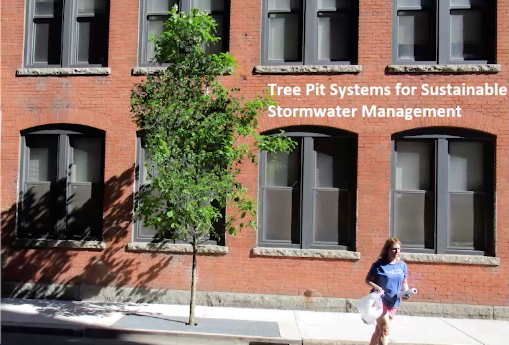Tree pit systems integrate common street trees with stormwater management as a viable and sustainable alternative to traditional “end of pipe” practices in achieving volume control and nutrient reduction, as well as providing uncompacted soil for healthy and vigorous tree growth, while maintaining pavement support. Municipal and regulatory authorities encourage low impact development (LID) techniques to replicate pre-development conditions and mitigate the negative impact of land development and surface paving.
Tree pit systems are well suited for residential, and commercial construction; parking lots; sidewalks and streetscapes; plazas, and; retrofit situations where stormwater conveyance is inefficient or ineffective due to aged or faulty infrastructure. Tree pit systems typically combine a precast concrete frame with an engineered soil (media) designed to collect, infiltrate and “treat” stormwater through physical, biological and chemical processes. Treated water may be conveyed to existing infrastructure via underdrain pipes and other mechanisms, or captured for detention or harvesting for supplemental irrigation. Since trees have the ability to utilize soluble fractions of nutrients in stormwater runoff such as phosphorous, nitrogen, and metals, as well as provide supplemental irrigation for the trees during periods of drought, stormwater could be considered a resource versus a waste product.
Careful and deliberate consideration in formulating and engineering the media that comprises the tree root space must take into account the geology of existing native soils, water table, utilities, building foundations, etc. The media must be designed to bear the mechanical compaction necessary to support the weight of overlying paved surfaces as to prevent settling or subsidence without altering water holding capacity and oxygen exchange. This same media must provide other necessary properties for both trees and roots to acclimate, survive, and sustain vigorous growth.
Municipalities, watershed associations, and A&E firms can benefit by including tree pit systems in land use development and road reconstruction practices.
About Instructors
Course Content






